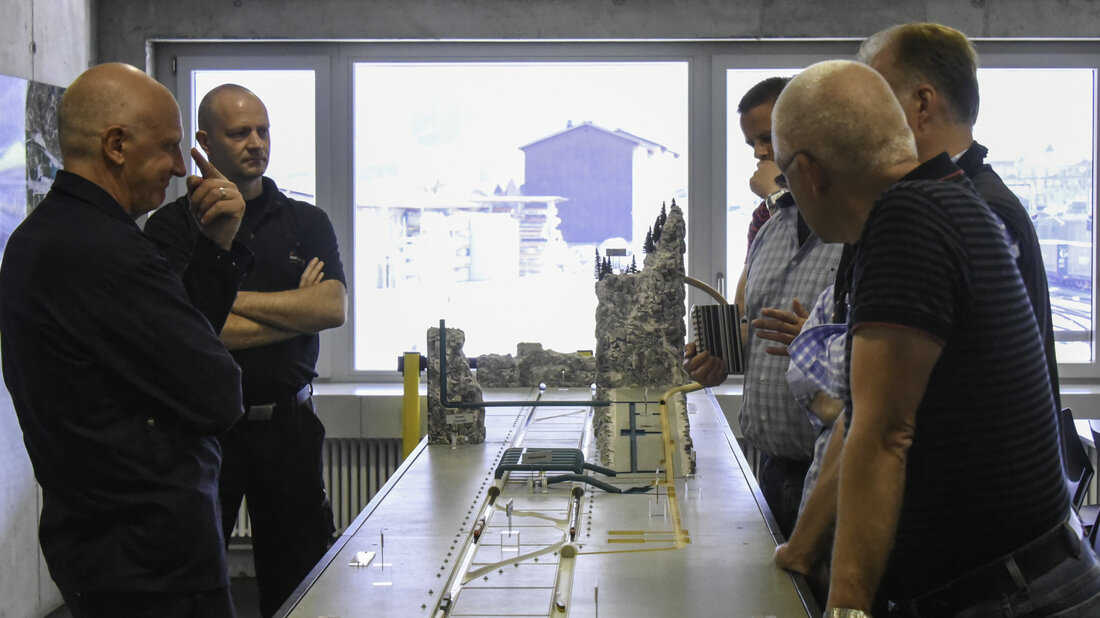For each tunnel, both location-specific and facility-specific preparation for operations is required, which must be developed together with the carrier and, if necessary, the builder of the tunnel. The earlier this is started, the greater the chance of creating good working conditions for the fire services, improving safety and avoiding unnecessary costs.
Early involvement benefits all parties involved
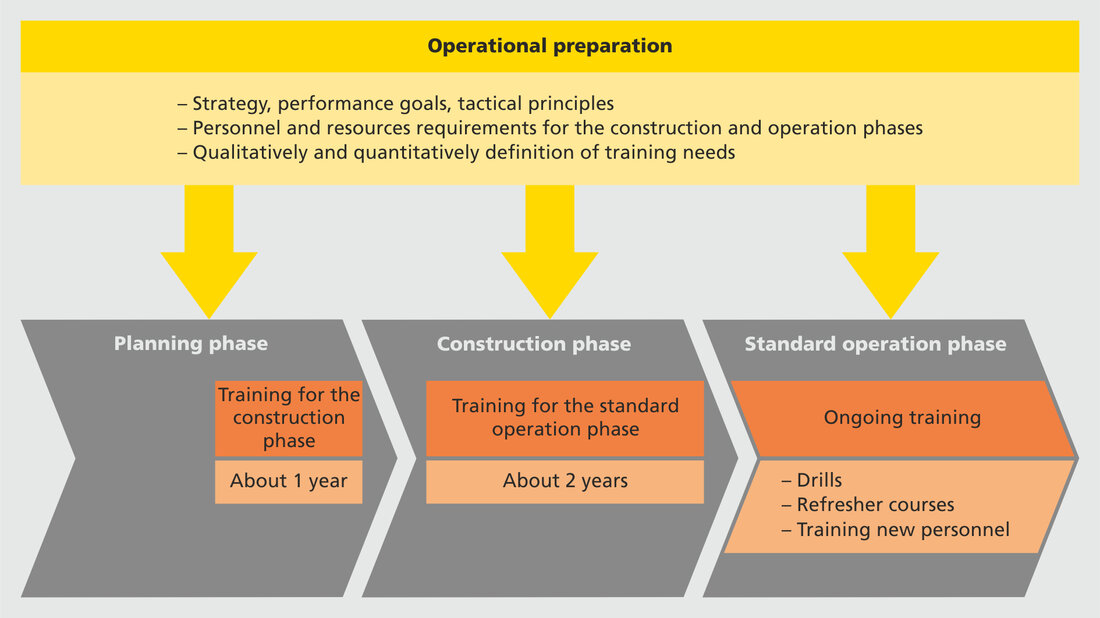
Early involvement of the local fire service is essential for three reasons and is useful for all parties involved:
- Safeguarding during the construction phase must be planned at an early stage. Most local fire services are not able to provide impromptu defensive fire protection and technical assistance during the construction phase of a tunnel. Therefore, they must be specially trained and equipped for this purpose. Alternatively, as is common in Baden-Württemberg, for example, a private rescue service is employed. A long preparation time is also required for their provision.
- The incident-relevant operational infrastructure of a tunnel should be coordinated with the local fire service's technical and organisational possibilities. Doing so can often both reduce costs and create optimal working conditions for the fire services.
- Preparing for an incident is by no means a pure task of the fire service. In almost every case, the fire services intended for incident operations come from different municipalities, states or even countries with different fire service laws. During the construction phase, numerous authorities are also involved, such as construction, mining, environment, or health and safety agencies. It involves many people who are specialists in their field but often have inaccurate ideas about the possibilities and limits of the fire services – which, in our experience, results in a significant need for communication.
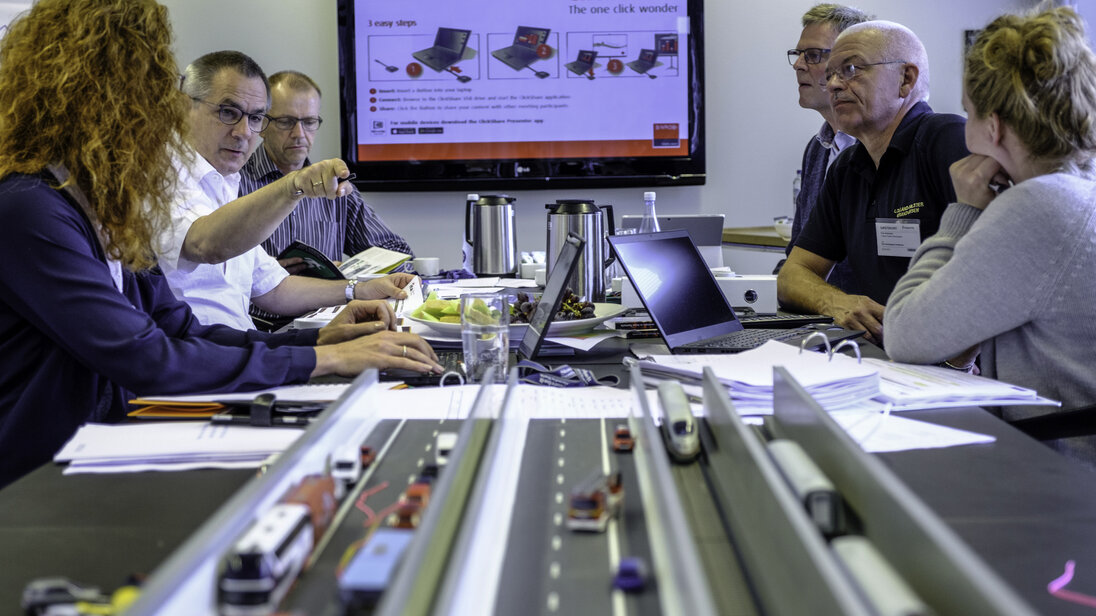
Special challenges of the construction phase
The construction phase places special demands on the emergency personnel, as these three examples show:
- The operational conditions change almost daily with construction progress, and many safety devices have not yet been installed or are only provisionally installed. This is why there is a need for constant exchange between construction management and the emergency personnel.
- In road tunnels, the maximum distances between two emergency exits are a maximum of 500 metres in accordance with the European Tunnel Directive. Appropriately trained and equipped fire services can cover this distance. During construction, however, the escape routes can be several kilometres long. Such large penetration depths are practically impossible for the fire services to cope with, which is why special procedures such as the use of refuge chambers have to be used for protection.
- In order to prevent the ingress of mountain water, the working area on the face is pressurised in some tunnelling processes. The work area can then only be entered or exited via a compressed airlock, which requires very specialised knowledge from the rescuers and can considerably delay rescue operations.
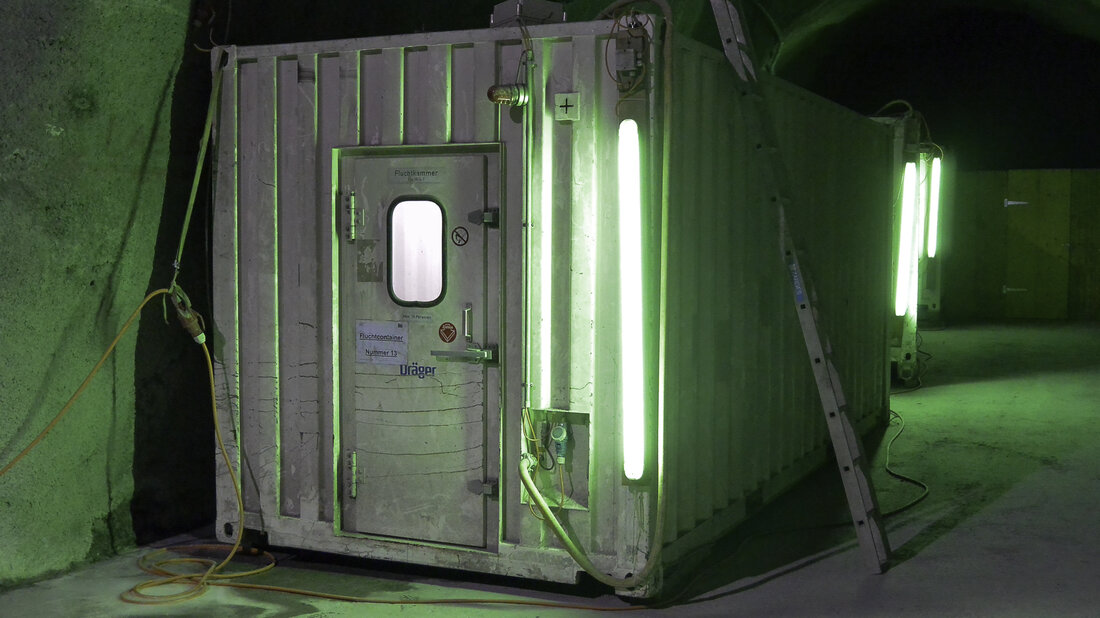
If responsibilities are not clarified, there is a risk of construction delays
Not all municipal fire services can cope with the aforementioned special challenges of the construction phase. Therefore, ideally, the decision on who will provide defensive fire protection and technical assistance during the construction phase is made before the submission process begins. Then it can be clarified in good time who bears the costs for either upgrading the local fire services or engaging a private rescue service. In the past, there have been several months of delays in the start of construction because the question of who is responsible for fire protection and occupational safety during the construction phase was not clarified in good time.
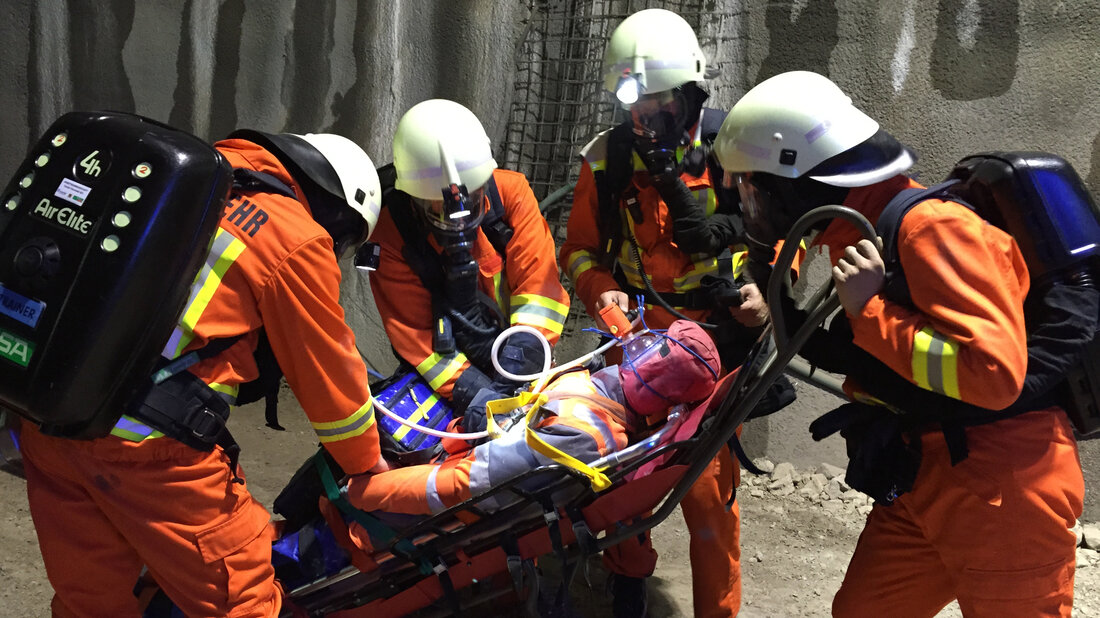
Tunnels and fire service must fit together
In many cases, fire services can adapt their tactics, equipment and training to the requirements of a tunnel built to standard. In some cases, however, fire services need installations that go beyond the standard in order to ensure adequate defensive fire protection. Two case studies:
- A city fire service is stationed in the immediate vicinity of Portal A. On the side of portal B, the nearest town with a fire service suitable for tunnel operations is more than 30 kilometres away. This means that a quickly effective fire attack from portal B is practically impossible. So consideration must be given to how fire attack by fire service A can be ensured - be it through additional drivable cross-passages, a safety tunnel that can be easily driven through, an appropriately designed fire ventilation system or other measures.
- However, the reverse case also occurs: For a tunnel, numerous passable cross-passages were intended between the two tubes with public traffic. However, the fire service, which was involved in the planning phase, came to the conclusion that they would hardly use these because when crossing from the clean to the affected tube, they would, in many cases, encounter vehicles backing up and would then have to proceed on foot anyway. So cross-passages that are only walkable would suffice but be considerably cheaper.
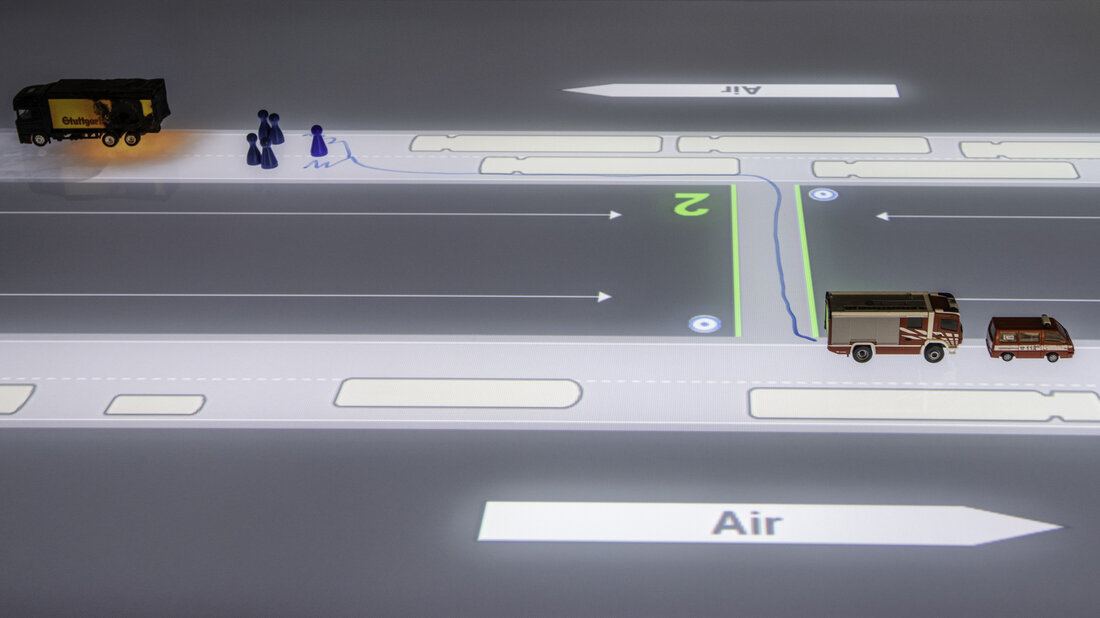
Decision-making needs prior to operational planning and training
The International Fire Academy's tunnel firefighting procedure provides extensive basics for many planning tasks, such as the tactical principle of «extinguish in order to rescue». However, such basic patterns must be adapted to the specific personnel, technical and organisational possibilities of the fire services. For example, the problematic question of how to define response times may arise. Should the fire service arrive at the portal or at the site within a specific time? Depending on the definition and length of the tunnel, it could turn out that the expected arrival times from the existing fire services locations cannot be met in any case. So, either the allowed response times have to be increased, or the first response units have to be stationed closer to the portal. Such decisions need extensive discussions, and all the more time, the more fire services and instances are involved. But until such fundamental questions have not been decided, the number of personnel required cannot be determined, and certainly not their training planned.
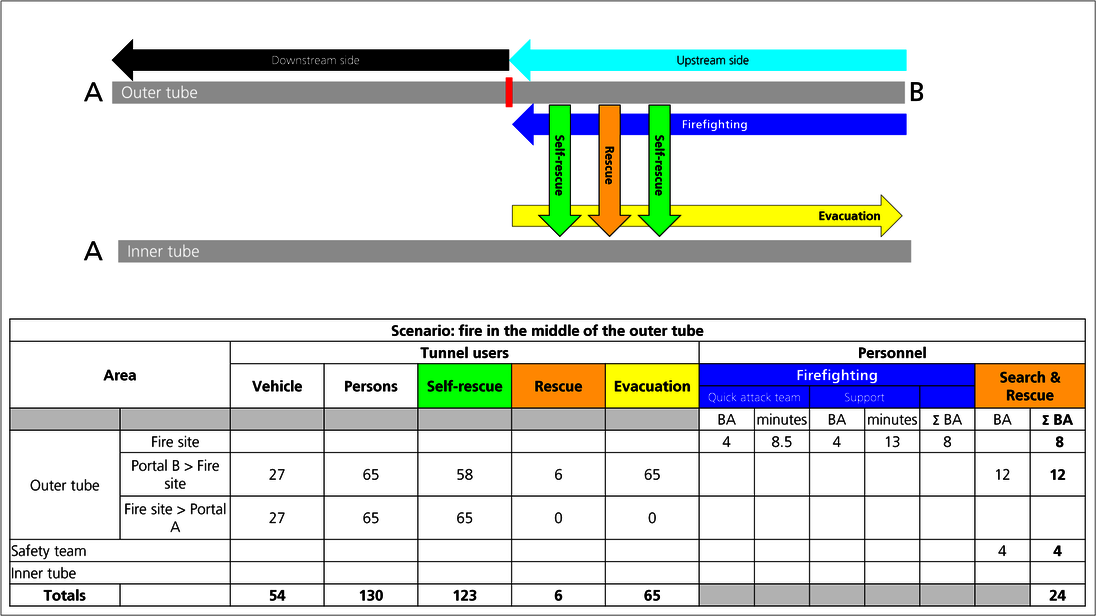
Learning how to interpret the tunnel correctly
In the planning phase, the future tunnel naturally exists only on plans or in the form of models. This results in the task of correctly imagining the tunnel, possible incidents and operational measures. It is all the more difficult, the less experience the respective fire service already has in tunnels. That is why the International Fire Academy offers workshops where the future tunnel fire services can familiarise themselves with the special features of underground transport systems. This also includes excursions to already existing, comparable tunnels and the respective fire services. Sufficient time should also be planned for this, which is why extensive operational preparation should begin as early as possible.
